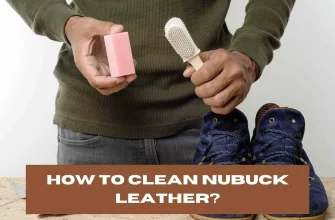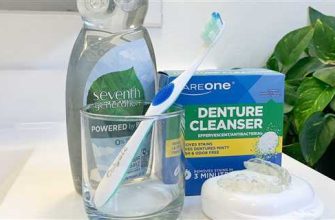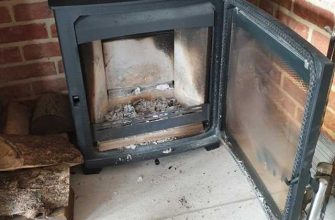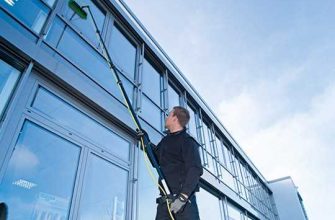Earwax, also known as cerumen, is a yellowish substance that is naturally produced by the body to keep the ears clean and moist. It plays a crucial role in maintaining the health of the ears by trapping dust, dirt, and germs, preventing them from reaching the eardrum. However, if earwax is not effectively removed or if it becomes trapped in the ear canal, it can lead to a build-up and cause various problems.
There are several factors that can contribute to earwax build-up. The most common cause is using cotton swabs or other objects to clean the ears, as this can push the wax further into the ear canal, making the problem worse. Additionally, some people naturally produce more earwax than others, or their ear canals may be more narrow, making it easier for the wax to become trapped.
When earwax build-up occurs, it can cause a range of symptoms. These may include earache, a feeling of fullness in the ear, hearing loss, itching, ringing in the ears (tinnitus), and even dizziness. If you are experiencing any of these symptoms, it is important to seek medical advice from your GP or pharmacist who can determine the best course of action.
Removing earwax should always be done with caution and should only be performed by a healthcare professional. They may use specialized tools to gently scrape or suction the wax out of the ear canal. Over-the-counter ear drops can also be used to soften the wax, making it easier to remove. However, it is important to note that inserting any objects, such as cotton swabs or even water, into the ear canal can lead to further complications, and should not be attempted at home.
Preventing earwax build-up is a simple practice that everyone can adopt. Regularly cleaning the outer ear with a cloth can help remove excess wax. Avoiding the use of cotton swabs or other objects in the ear canal is also important, as this can push the wax further into the ear and cause more problems. If you think you have excessive earwax or are experiencing symptoms, it is always best to seek medical advice to avoid any potential complications.
In conclusion, understanding the causes, symptoms, and remedies for earwax build-up is essential for maintaining ear health. By following proper hygiene practices and seeking professional support when needed, you can help prevent and manage earwax build-up, ensuring the health and function of your ears.
- Preventing earwax build-up
- What to do if you think your ear is blocked
- Do’s and Don’ts
- When to seek medical help
- Preventing Future Build-Up
- Should You Clean Your Ears?
- Why Does Earwax Build-Up?
- When Should You Clean Your Ears?
- The Risks of Cleaning Your Ears by Yourself
- Safe and Effective Earwax Removal
- How to Clean Your Ears
- What Causes Earwax Build-Up?
- How to Remove Earwax Safely
- Tips for Preventing Earwax Build-Up
- When to speak to your GP
- Video:
- How to Unblock Your Ears | UNCLOG a CLOGGED Ear | How to Drain Your Fluid Filled Ear
Preventing earwax build-up
There are several practices you can adopt to help prevent earwax build-up. Here are some do’s and don’ts:
- Do: Clean your ears regularly, but gently. Use a damp cloth to wipe the external area of your ears. Avoid inserting any objects, such as cotton swabs, into your ear canal as it can push the wax further inside and cause blockage.
- Do: Seek specialised help for cleaning your ears if you have excessive earwax or experience any non-urgent problems. A GP or nurse can provide guidance and perform the cleaning using safe techniques.
- Do: Use eardrops to soften and remove excess earwax, if recommended by your healthcare provider. Olive oil is a commonly used and effective option.
- Do: Be mindful of your ear hygiene habits. If you notice symptoms of earwax build-up, like reduced hearing, ear pain, or ringing in the ears, seek medical advice.
- Don’t: Use cotton swabs, hairpins, or other objects to clean your ears. They can damage the delicate skin inside the ear canal and may even cause injury to the eardrum.
- Don’t: Attempt to remove a blocked ear canal yourself, especially if you have narrow ear canals or if you are uncertain about the cause of the blockage. Always seek professional help in such situations.
- Don’t: Use ear candles. Despite claims of their effectiveness, there is no scientific evidence to support their use, and they can potentially cause harm.
Remember, prevention is always better than treatment when it comes to earwax build-up. By adopting these practices, you can maintain good ear hygiene and minimize the chances of excessive earwax accumulation.
What to do if you think your ear is blocked
If you think your ear may be blocked with earwax, there are a few things you can try at home to help clear it.
Do’s and Don’ts
Do:
- Speak to your pharmacist: They can provide advice on over-the-counter treatments that may help remove the build-up of earwax.
- Use eardrops: Eardrops can help soften the wax, making it easier to remove. Follow the instructions provided with the eardrops and avoid inserting anything into your ear if you have a damaged eardrum.
- Try irrigation: This involves using a syringe filled with water to gently flush out the wax blockage. This should only be done if you feel comfortable doing it and you have no history of ear problems or surgery.
- Contact your GP or practice nurse: If the blockage persists after a few days or if your symptoms worsen, you should seek medical advice.
Don’t:
- Use cotton swabs or any other objects to try and remove the wax. This can push the wax further into the ear canal and potentially cause damage.
- Use ear candles: Ear candles are not recommended as they have no proven benefits and can actually cause harm to your ears.
When to seek medical help
If your earblockage doesn’t improve with home remedies, it’s important to seek medical advice. You should also contact your GP or practice nurse if you experience any of the following symptoms:
- Persistent pain in your ear
- Difficulty hearing
- Ear discharge
- Dizziness or vertigo
- Ringing in your ears (tinnitus)
Remember, your GP will be able to provide support and advice for any earwax-related problems and can determine if further treatment is needed.
Preventing Future Build-Up
To help prevent earwax build-up in the future, you can adopt a few simple practices:
- Avoid inserting anything into your ears, including cotton swabs.
- Keep your ears clean by gently wiping the outer ear with a cloth.
- If you find you have recurring earwax problems, you can use eardrops regularly to help keep your ears free from wax.
By following these practices, you can help maintain good ear hygiene and minimize the risk of earwax build-up.
Should You Clean Your Ears?
When it comes to ear hygiene, many people wonder if they should clean their ears. The answer is not as simple as a yes or no. Cleaning your ears can be beneficial, but it should be done with caution and using the right methods.
Why Does Earwax Build-Up?
The ears naturally produce earwax, also called cerumen, which usually moves to the opening of the ear canal and naturally falls out. This process helps protect the ear by trapping dirt, dust, and germs, preventing them from reaching the eardrum and causing problems. However, sometimes the earwax can become trapped and lead to a build-up, causing a blocked feeling in the ears.
When Should You Clean Your Ears?
It is generally recommended that you do not try to remove earwax unless you are experiencing symptoms or having problems due to the build-up. Some common symptoms of earwax build-up include:
- Earache or pain
- Feeling of fullness in the ear
- Decreased hearing
- Tinnitus (ringing in the ears)
If you experience any of these symptoms, it’s best to consult with a GP, nurse, or specialised pharmacist who can assess your situation and provide appropriate advice and treatments.
The Risks of Cleaning Your Ears by Yourself
If you decide to clean your ears, it’s important to be cautious and avoid using any objects or methods that could harm your ears or push the wax deeper into the ear canal. Some common practices that should be avoided include:
- Using cotton swabs or other objects to scrape the ear canal
- Using ear candles, as they have not been proven to be effective and can be dangerous
These methods can lead to injuries, infections, or even a perforated eardrum, which can cause hearing loss or other complications.
Safe and Effective Earwax Removal
If you are experiencing symptoms or have a blocked feeling in your ear due to earwax build-up, there are safe and effective ways to remove it. These may include:
- Using over-the-counter ear drops to soften the wax
- Getting an ear irrigation or ear syringing performed by a healthcare professional
- Receiving specialized earwax removal treatments
It is always recommended to seek professional support if you are unsure about how to proceed or have any concerns regarding your ear health. They can provide the necessary guidance, support, and treatments to help you with your earwax issue.
How to Clean Your Ears
Having clean ears is important for everyone. Earwax, also known as cerumen, is a natural substance produced by the body to protect the ears from dust, germs, and other foreign particles. However, sometimes earwax builds up and can cause discomfort or hearing problems. If you think you may have excessive earwax or are experiencing symptoms such as earache, decreased hearing, or ringing in the ears, it may be time to remove the buildup.
What Causes Earwax Build-Up?
Earwax build-up can occur for several reasons. Some people naturally produce more earwax than others, while others may have narrower ear canals where wax can easily get trapped. Using earphones or hearing aids can also push the wax deeper into the ear, causing a blockage. Additionally, inserting objects such as cotton swabs or hairpins into the ears can push the wax further in and create a build-up.
How to Remove Earwax Safely
If you believe you have too much earwax or are experiencing symptoms related to it, there are several ways to remove it. It’s important to note that you should not use cotton swabs or other objects to clean your ears, as they can push the wax deeper and potentially damage the eardrum. Instead, consider the following methods:
- Softening with Eardrops: Over-the-counter eardrops can be used to soften the wax, making it easier to remove. Follow the instructions on the packaging and consult with a pharmacist or doctor if you have any questions.
- Flushing with Warm Water: Flushing your ears with warm water can help remove softened earwax. Tilt your head to the side and gently squeeze a bulb syringe filled with warm water into your ear canal. Allow the water to drain out, and repeat if necessary. It is important to use clean, lukewarm water to avoid discomfort or injury.
- Seeking Medical Assistance: If you are unable to remove the earwax yourself or if you are experiencing severe symptoms, it is best to seek medical assistance. Doctors or nurses can use specialized tools to safely remove the earwax or may recommend other treatments depending on your situation.
Tips for Preventing Earwax Build-Up
To reduce the risk of earwax build-up, it is recommended to practice good ear hygiene. This includes:
- Not inserting objects into your ears, including cotton swabs or hairpins.
- Avoiding excessive ear cleaning, as this can stimulate the production of more earwax.
- Keeping your ears dry and clean. Wipe the outer part of your ears with a clean cloth after showering or swimming, but do not insert anything into the ear canal.
- If you think you have a foreign object in your ear or if you are experiencing persistent symptoms, seek medical advice.
Remember, it’s important to consult with a healthcare professional if you have any concerns about your ears or if you are experiencing severe symptoms. They can provide appropriate guidance and support to ensure your ears are healthy and well taken care of.
When to speak to your GP
If you’re experiencing symptoms of earwax build-up or are having problems with your ears, it’s important to know when it’s time to seek medical advice. Here are some reasons why you may need to speak to your GP:
- If you have tried home remedies such as using eardrops to soften the earwax but the build-up persists or worsens.
- If you are unable to remove the excess earwax on your own and it is causing discomfort or affecting your hearing.
- If you suspect that your earwax build-up is due to an underlying medical condition or injury.
- If you experience symptoms such as dizziness, ear pain, or a feeling of fullness in the ear.
- If you have narrow ear canals, as it may make it more difficult to remove the earwax safely.
It’s important to note that you shouldn’t attempt to scrape or clean deep into your ear canal yourself, as this can lead to injury and worsen the problem. Instead, seek the advice of a GP or nurse who can provide specialised care.
If you’re unsure whether your symptoms require medical attention, you can always consult with a pharmacist who can offer guidance and recommend suitable over-the-counter treatments.
Remember, if you suspect that there may be an underlying cause or if you’re unsure about what to do, it’s always best to seek professional advice from a healthcare practitioner. They can assess your situation and provide the necessary support and treatment.








